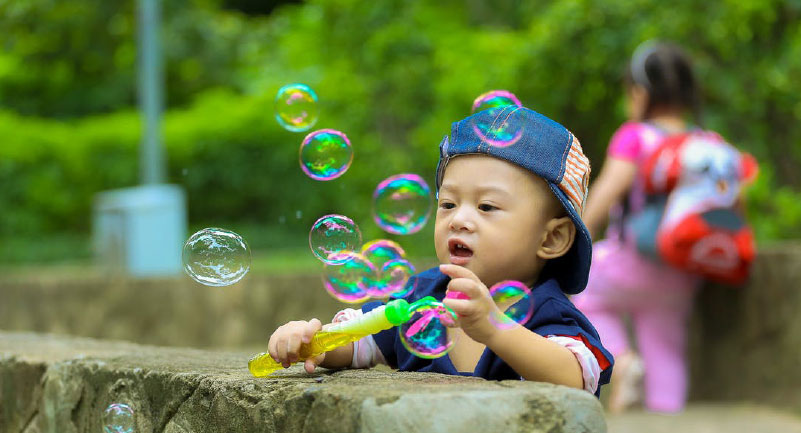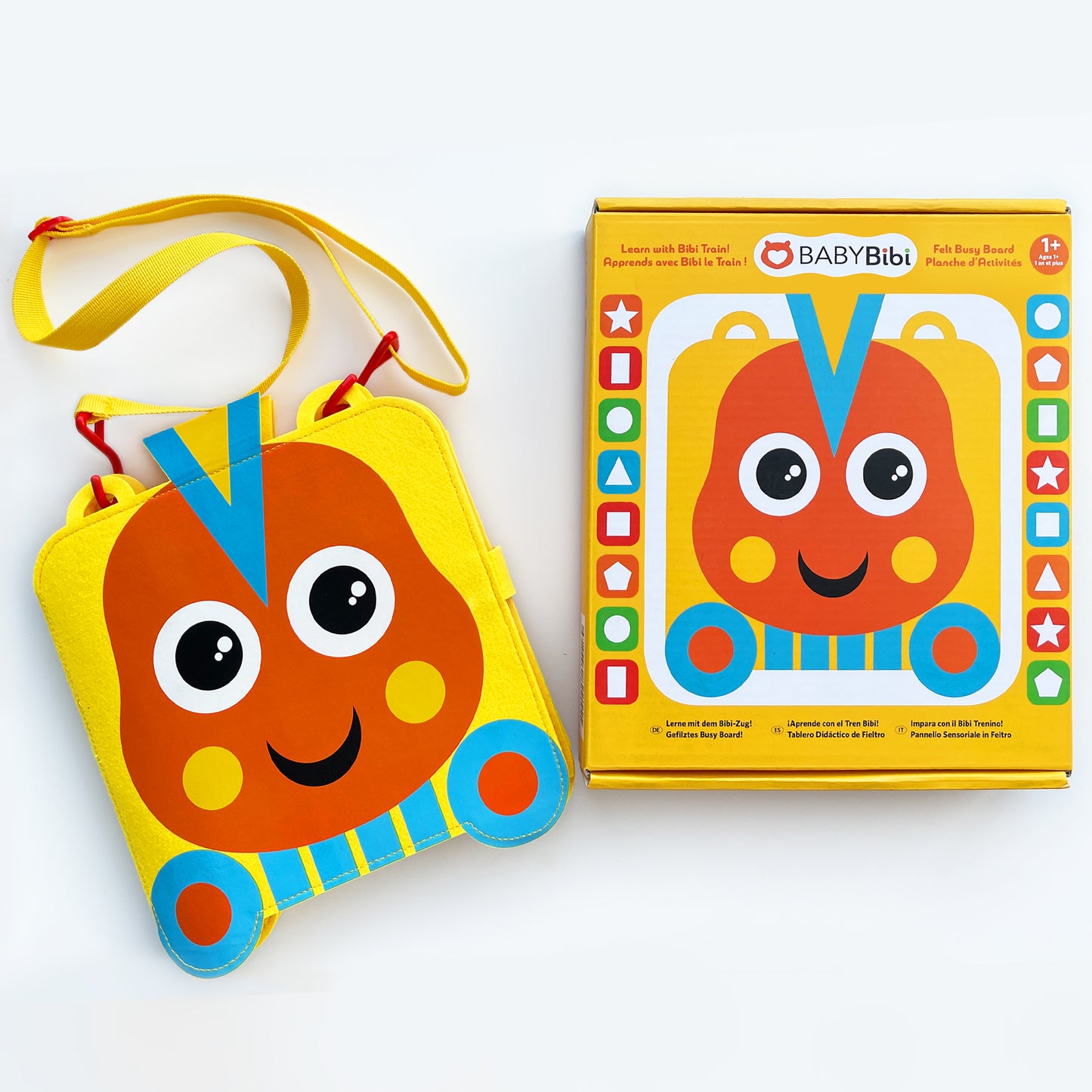
Your child is 5-6 Years old
Gone Fishing
Love prizes? Go shing then! First, construct homemade shing poles out of ordinary bamboo sticks, clothes- pins, and yarn. It’s all about the imagination, so fetch a large cardboard box, probably one that came with
a home appliance. This is to construct a makeshift hideaway near a doorway or hallway. Be sure to use a tablecloth or sheet to cover the card table.
Try to avoid encountering kids casting their line to catch adults hiding in the water. The host (parent) can pretend that the tub is the ocean and they’re literally sitting in a body of water waiting to be baited in by a child. Kids enjoy being in control of certain situations and “Gone Fishing” allows them to reign momentarily. Even parents will enjoy playing the sh and sharing this experience with their kid (s).
When a child successfully catches an adult, he or she will receive a prize. These range from clothespins to sugary treats (miniature candies). With this reward system in place, kids are always eager to play Gone Fish- ing again. Educational bene ts include sensorimotor development, child/parent interaction and communi- cation skills enrichment. As a result, the child will learn how to become a more independent individual and show gratitude for life learning achievements.
Repeat It!
This game focused on repetition is so much fun! “Repeat It” requires a signi cant degree of concentration which is an amazing learning experience to boost brain development in children. Similarly, active listening is a foundation skill needed to master “Repeat It.” Too often, words are heard without proper understand- ing. So how should one play this sensory game? It has a simple objective - repeat what’s whispered into the ear by another child.
Yes! Anyone can play “Repeat It.” For this, everyone should gather together and form a huge circle. Who doesn’t love circle games! Players must whisper their rst thought into someone’s ears. So, keep going until everyone has had a turn. At the end, they’ll all share their messages starting with the first player.
Children who practice active listening become better communicators and achieve a clearer understanding of spoken words. Additionally, this promotes a positive attitude in children as they’re developing awareness to process voice in ection and interpret body gestures. What’s more important, active listeners rarely have misunderstandings and con icts. This approach to practicing active listening help kids learn e ective com- munication to improve social interaction.
Magical Mama or Papa!
Henry Houdini is one of greatest illusionists who ever lived. Certainly, water tanks, chains, and locks are a bit too much for kids. How about staging a “Magical Mama or Papa!” Show for the children? For the rst act, place three empty cups with the bottoms up on the table and place a single coin under one of them before shu ing the lot around. Who can guess which one trapped the coin?
Cup 1, 2 or 3? Who knows? The host can even swipe the coin from under the cup easily when shu ing. Wow! Kids will be amazed thinking the coin has dis- appeared. Children’s reasoning about actions will come into perspective and inspire to ask questions. Research has established a close relationship between expres- sive language and imagination. It’s a process that encourages cognitive growth with appropriate stimula- tion. Why should parents help kids embrace imagination? A shoulder of support helps a child feel con dent and motivated to continue the adventure. Quite often kids enjoy the company of an adult once there’s no interference. Whenever there’s an opportunity to encourage a child for his or her achievement, parents shouldn’t shy away from doing so.
Bubbles
Get a straw, plate, water and dish soap to make “Bubbles.” First, combine the water and soap in a deep con- tainer or the plate. It should create suds which can be blown through the straw to make ying bubbles. Kids can compete to blow the biggest bubbles that won’t burst quickly.
Kids are more conversational when they’re involved in sensory bubble activities. People toy like bubbles require adult intervention. Aren’t kids the happiest individuals when blowing “Bubbles? “ Toddlers will talk, make sounds, point to the jar or show their parents images of bubbles.
Messy bubble games aren’t always recommended for indoor adventure, however, kids can play in a tub and still realize developmental milestones. Common comments young children will make when playing “Bub- bles” are “It popped on your head!” “That bubble is tiny,” “I’m all wet!” and more. The reaction parents
get from children playing with bubbles is hilarious. This game is also a mood enhancer.
Giant Dot-To-Dot!
Use a marker to draw dots on paper and stick it to ground or oor. Even if the dots do not form a picture when all points are connected, this game still helps a child stretch his or her muscles for healthy physical balance. Patterns can be random or non-conforming.
This puzzle activity boosts a child’s ability to solve problems. For better viewing, parents should use rich col- ors to make it easier for a child to connect the dots. Learning with dots is an excellent tool to build self-con - dence and introduce di erent number sequence. Furthermore, a child will greatly bene t from stretching, moving and reaching while connecting the dots.

Since one is working with a large network of muscles to develop motor coordination, it’s sensible to expose children to activities that encourage movement. If kids nd counting di cult, a child can realize greater pro- ductivity with connecting Giant Dot-To-Dot!. With practice, he or she should learn how to recognize num- bers even when the sequence is changed. Kids struggling with foundation math? Giant Dot-To-Dot! will have them counting and solving di cult math problems in no time.
Sift ‘N’ Spell
There’s an activity or game to help a child improve academically. Sift ‘N’ Spell can address many problems experienced with spelling and literacy. What’s admirable about Sift ‘N’ Spell is that it can complement a child’s skill level and imagination without taking away from the learning experience.
What’s the rst step to playing this game? Gather supplies: food container (plastic) or bucket, slotted spoon, rice, letters, miniature objects or toys and a small bucket. Once the supplies checklist is ful lled, pour rice into the bucket and then toss in some letters. For those who aren’t enthusiastic about rice, try some sand from a sandbox. So, a child should use the slotted spoon to dig into the sand or rice to discover hidden let- ter. Remember to start with 3-4 letter words and cheer on a child as he or she is exploring the bucket.
It’s the right learning stimulation to help young children learn the alphabet and practice matching letters. Additionally, it’s the coolest game to help kids explore letter sounds. Whether a child is learning words
in the sequence of 2, 3, or more, this activity can complement any skill level. Kindergarten learners and rst-graders will quickly expand their vocabulary as they’re encountering new words.
Family-Photo Bingo
IIsn’t bingo games fun? Family-Photo Bingo has inherited some of the principles of the traditional game. Family-oriented play provides enrichment in di erent ways. The activities enhance a child’s working memory to boost retention when playing. So, arrange 9 family photos in a 3-row layout. Give the child or children 9 checker pieces or playing cards after arranging all the images. These will represent bingo chips.
When a player says “grandma,” “mommy,” daddy or another family member, a child should place a card on top of the matching picture. Any player who successfully chooses the correct photos three consecutive times, he or she wins. This should improve visual motor skills and support memory development. Bin- go-style matching games bolsters their Self-esteem and self-con dence when playing.
This activity is equally bene cial in helping a child identify di erent colors. Additionally, exposing them to learning stimulation like Family-Photo Bingo will enhance visual perception and support hand-eye coordi- nation. In anoth- er instance, it teaches a child e ective skills that can be applied in the interest social ex- ploration and improving communication. Kids get overly excited about winning, so parents should always commend their e orts and be a guide when needed. Critical thinking, logic/ reasoning, spelling, and spatial awareness are all learning outcomes of participation.
Bowl-A-Rama
Ready to create a makeshift bowling alley for kids to indulge their sporting skills? Get a large rubber band and about 6 water bottles (small) to set up the platform. Kindergarten preparedness is one of the many learning bene ts of playing pretend bowling with children.
Bowl-A-Rama helps a child to see the value of sharing and practicing turn-tak- ing. Of course, a youngster should always exhibit good sportsmanship skills when playing. One great bene t of Bowl-A-Rama is that kids can participate irrespective of experience and skill level. In the midst of practicing hand-eye coordina- tion, a child has a genuine opportunity to build muscles and
support physical growth.
Social skill building is equally bene cial to kindergarten kids and preschoolers. A game like Bowl-A-Rama is a pillar to exercise compliance, self-management, control, and assertiveness. Early intervention prepares
a child to manage real-life social situations effectively whenever issues arise. While it’s been observed that some kids develop these skills naturally, others constantly face different challenges that prevent them from applying the principles to everyday social situations.

